 Why Is My Tap Water Running Warm Then Cold
Why Is My Tap Water Running Warm Then Cold
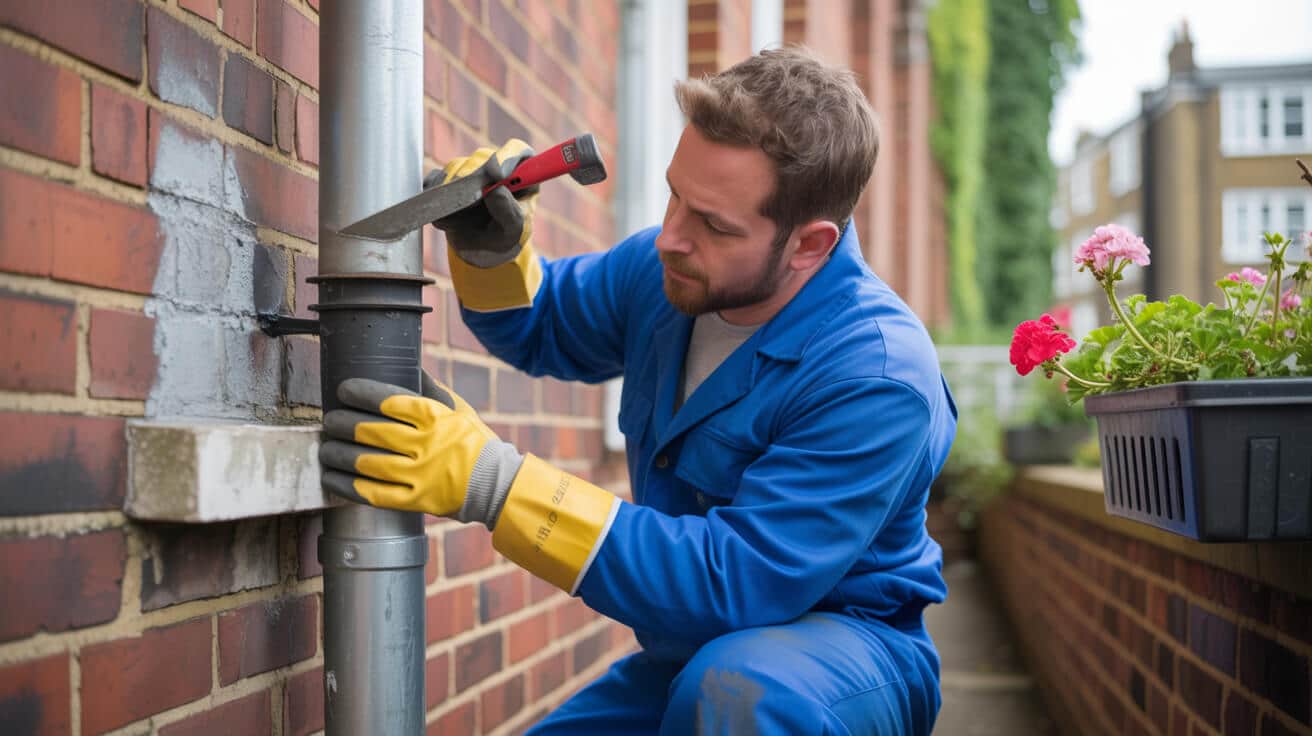
Why Is Your Tap Water Fluctuating Between Warm and Cold? The Real Issues Owners, Agents, and Operators Need to Solve
If your tap water can’t make up its mind—one second warm, the next ice-cold—you’re not witnessing a harmless quirk. In the UK, every swing in temperature is your system’s way of waving a distress flag before a bigger complaint, costly run of callouts, or even a compliance penalty. Most “temperature wobbles” are symptoms of deeper issues: unseen faults, outdated configurations, or small errors in setup that quietly erode confidence in landlords, letting agents, managers, and business owners. Ignoring these signals? That’s how minor inconvenience turns into a full-blown operational headache.
When your taps become unpredictable, it’s your plumbing urging you to fix problems while the fix is still cheap—and the risk still optional.
This stepwise guide unpacks UK-specific risks, demystifies the actual technical causes, and spotlights the overlooked role compliance plays—so you can restore not just hot water but trust and control across every property you run.
What Real Risks Hide Behind Tap Water Temperature Swings?

It’s tempting to shrug off temperature swings as everyday hassle. The hidden risks, however, run much deeper—threatening safety, denting reputation, and, most costly of all, opening portfolios up to non-compliance hits and loss of tenant trust. The silence that follows every “annoying quirk” is often the calm before much heavier storm.
Fluctuation Isn’t Just Inconvenience—It’s a Threat to Safety and Confidence
Every time tap water shifts from hot to cold or vice versa, you’re encountering more than just irritation:
- Vulnerable occupants at risk: Sudden cold/hot surges especially threaten children, the elderly, and those with mobility impairments—raising the prospect of scalds, cold-shock, or comfort breakdown.
- Trust takes a hit: Tenants equate water inconsistency with substandard property management. For landlords/agencies, repeats mean lost credibility and, eventually, lost tenants.
- Compliance can be breached in an instant: Properties must meet HSE and tenancy standards for safe, reliable water—the wrong temperature surge can trigger a complaint or trigger an inspection *(Water Regs UK, 2024)*.
Ignore that odd cold spurt and you don’t just lose points with tenants—you risk compliance headaches, emergency callout costs, and bigger repairs down the line.
The Real-World Fallout: Cost, Reputation, and Legal Exposure
It’s more than a chilly surprise:
- Unstable taps after kitchen or appliance use: hint at broader pressure and balance issues—often, not the tenant’s fault.
- Audible gurgles, sudden pressure drops, or “hot-hot-cold” sequences: suggest air or debris lurking, waiting to cause trouble at the worst moment.
- Water failures at peak demand: (morning rush, back-to-back showers, commercial use) point to undersized, ageing, or misconfigured systems.
Own the problem early, and costs stay small. Shrug and defer, and you’re staring at water damage, legal letters, and tenants who start price-shopping your competitors.
How Does Hot Water System Type Decide What’s Actually Going Wrong?
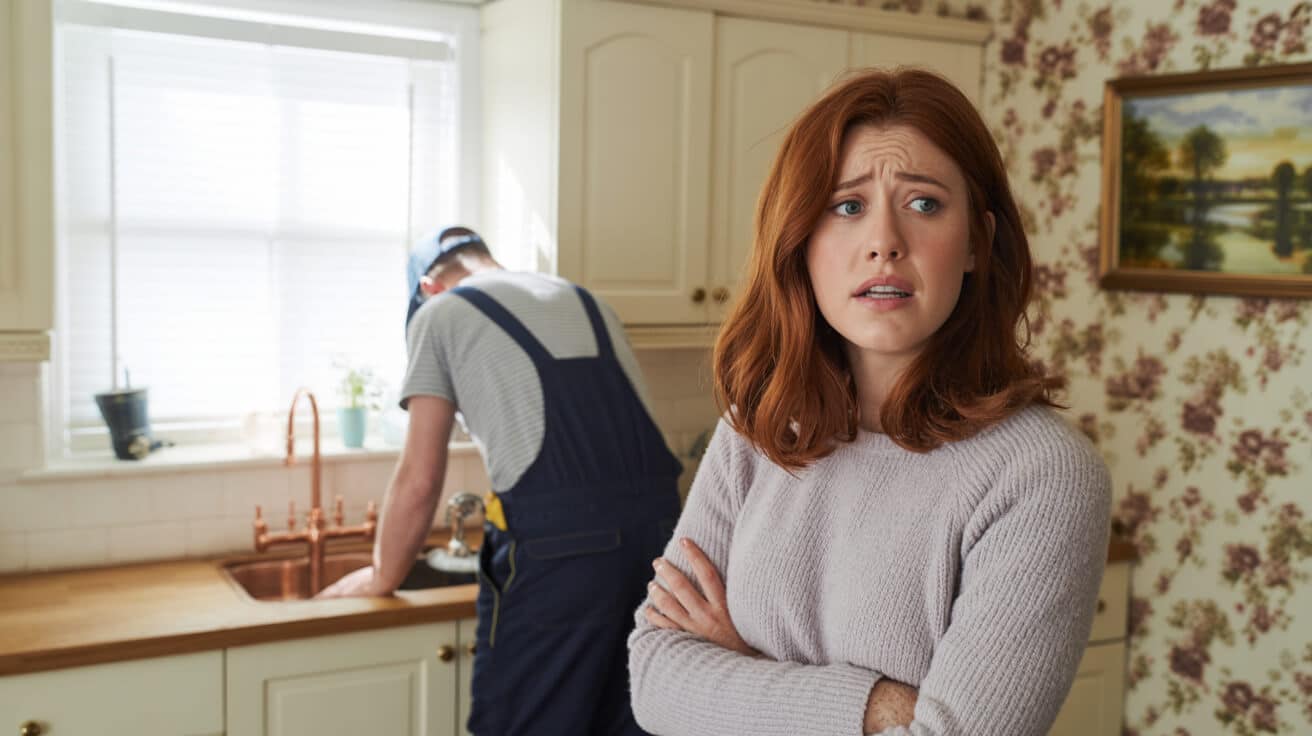
All hot water setups are not created equal. The system you have—whether it’s a combi, a cylinder, or a hybrid—directly shapes both the cause and the right solution for temperature swings. Smart owners, agents, and facilities managers use system logic as a shortcut to clearer, less expensive fixes.
Combi Boilers: Great for Convenience, but Unforgiving Under Pressure
combi boilers dominate the UK’s space-saving, on-demand market; they’re efficient and pack horsepower into tight footprints. But their weak spot is simultaneous demand:
- Open a hot and then a cold tap at once?: The system balances both, often leaving neither ideal—so hot runs cold until pressure stabilises.
- Peak periods in busy homes or offices create the sharpest swings: —the more taps open at once, the more likely flows suffer.
What to look for:
- Cold shock when using kitchen appliances and taps together? That’s a combi’s balancing act failing under pressure.
- In multi-flat or subdivided conversions, old pipe sizing rarely matches today’s usage peaks, amplifying the problem.
When your system shares cold feeds between flats, every change at one tap sends ripples through the whole block.
(Viessmann Tech, 2024)
Cylinder and Hybrid Systems: More Stable, but Only if Maintained and Right-Sized
Cylinder storage (vented/unvented) creates a buffer—hot water on tap for several users, provided design and upkeep don’t fall behind demand:
- Undersized cylinders can’t keep up with multiple baths, showers, or sinks: , leading to rushes of cold before tanks can reheat.
- Faulty immersions or limescale build-up: quietly halve usable capacity, with homes only noticing after the hot runs cold mid-use.
Spotting the warning signs:
- Early cold water in a string of showers? The last user’s feeling the tank limitations.
- Thermostats set too low or immersion heaters overdue a check spell poor performance and a rising tide of complaints—especially in shared properties.
Cylinder reliability depends on sizing, regular descaling (in hard water areas), and sticking to serviced manufacturing specs.
(Heatrae Sadia, 2024)
Where Do Hidden Plumbing Faults Sabotage Consistent Hot Water—And How Are They Found?
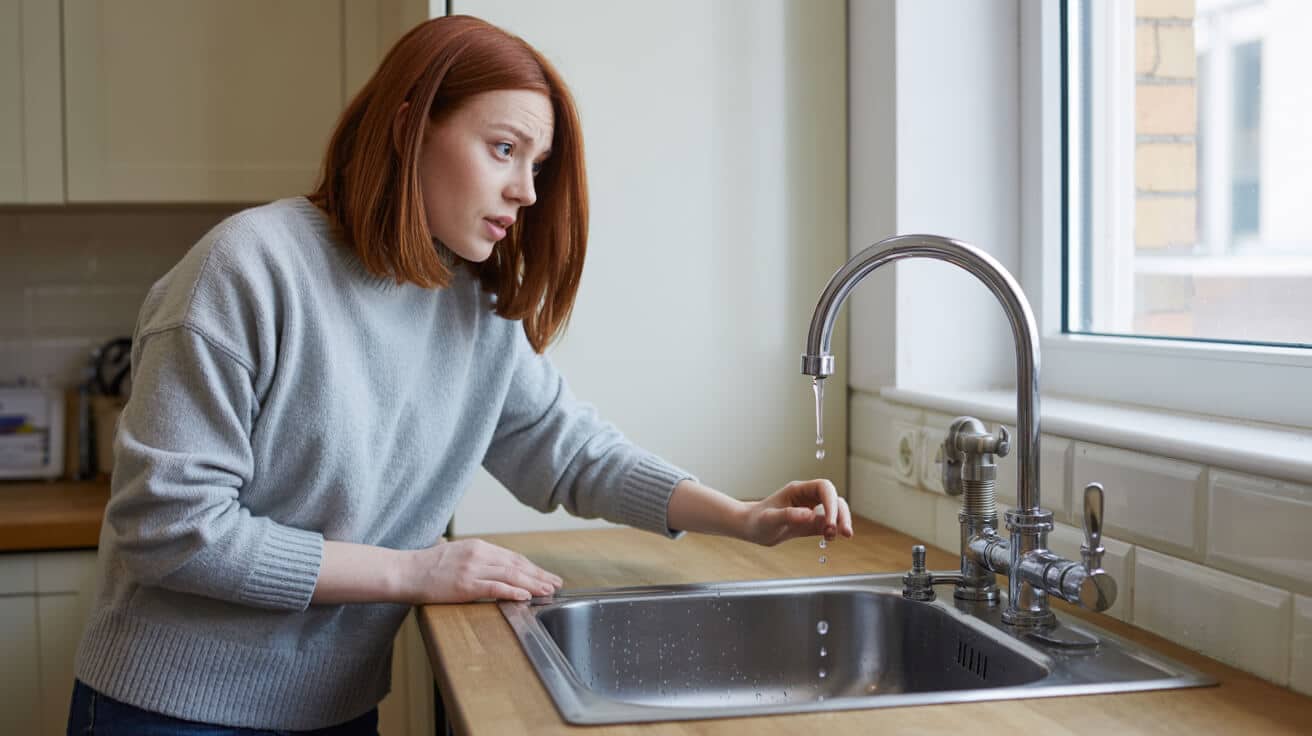
Not every tap issue starts big or in full view—many stem from invisible pipework, overlooked valves, or confusing DIY “improvements” that nobody owns up to. An experienced engineer doesn’t just look at the tank—they follow the flow, isolate the system, and track down the real source.
Mixer Valve Slips, Crossed Pipes, and Fixture-Specific Faults
Modern mixer taps with beautiful exteriors can hide a simple truth: a faulty cartridge (or misrouted pipes during renovation) can send hot and cold the wrong way, or even allow cold water “back-feed” to wash out the heat.
- Diagnosing at fixture level first: If only one tap’s affected and shutting its cold supply solves it, the issue is localised—often the cartridge or a snake of pipework rerouting cold “upstream”.
- Quick-fix disasters: Recent bathroom or kitchen renovations can leave crossed supplies and permanent “ghost” faults behind the wall—especially in converted properties.
In UK properties, the most expensive faults often hide behind the neatest new tile.
Airlocks, Debris, and Pipework Weak Points
If you’re hearing splutters, hissing, or inconsistent flows—especially after “drain downs” or periods of inactivity—airlocks or sediment may be the root cause:
- Airlocks: Form in loft pipes, risers, or long dead-legs after draining or repair. Persistent “lukewarm–cold” switches follow.
- Sediment and scale: Gather at low points in pipework or behind infrequently used taps, particularly in older and unserviced properties.
Routine “fixes” like running taps may temporarily improve things but never clear the issue. Only system draining, professional flushing, and smart diagnostics truly solve them.
Is Your Water Heater or Cylinder Quietly Failing? Failures and Fixes in Plain English
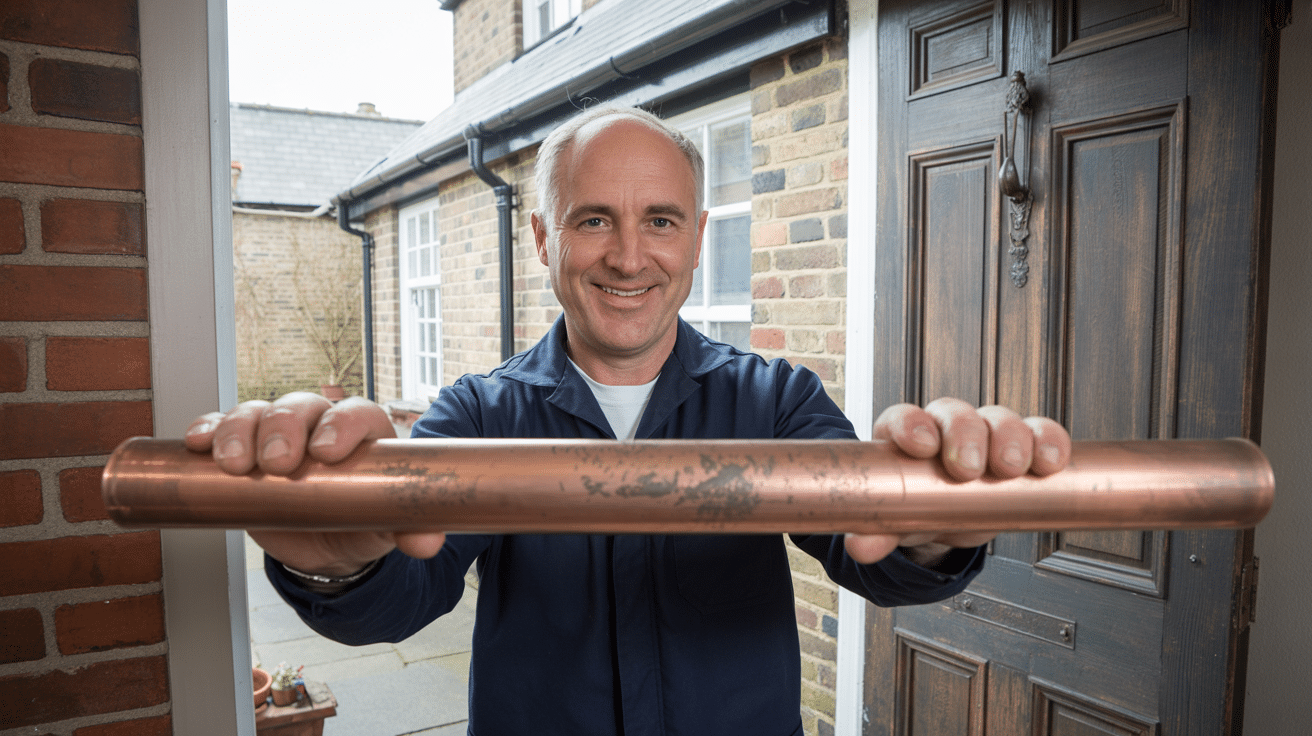
The heater itself is often the silent culprit in temperature swings. With moving parts, heating elements, and thermostats all working overtime, any part off-spec can wreak chaos—usually before it’s obvious on the outside.
Thermostats, Elements, and Limescale—Hidden Culprits Lurking Inside
- A thermostat drifting out of calibration or a limescale-clogged heating element: will “cycle” hot water out at unexpected intervals, or make a tank that’s half “hot” by touch but cold by output.
- Timer mishaps or tripped cut-out switches: can shut off reheating cycles, leaving only a quickly depleted store of hot water for the next user.
- Hard water?: Regions with high calcium levels eat through immersion elements and lower efficiency every year *(Ariston, 2024)*.
Cylinder faults rarely announce themselves with a bang—they simply make hot water less reliable, costlier to heat, and riskier to insure or let.
Plumbing and legal takeaway: Only G3-certified engineers can service unvented cylinders—DIY fixes void insurance and can leave letting agents or property owners exposed in audits.
Why Does the Building Layout—or Daily Routines—Turn Solid Systems Unreliable?
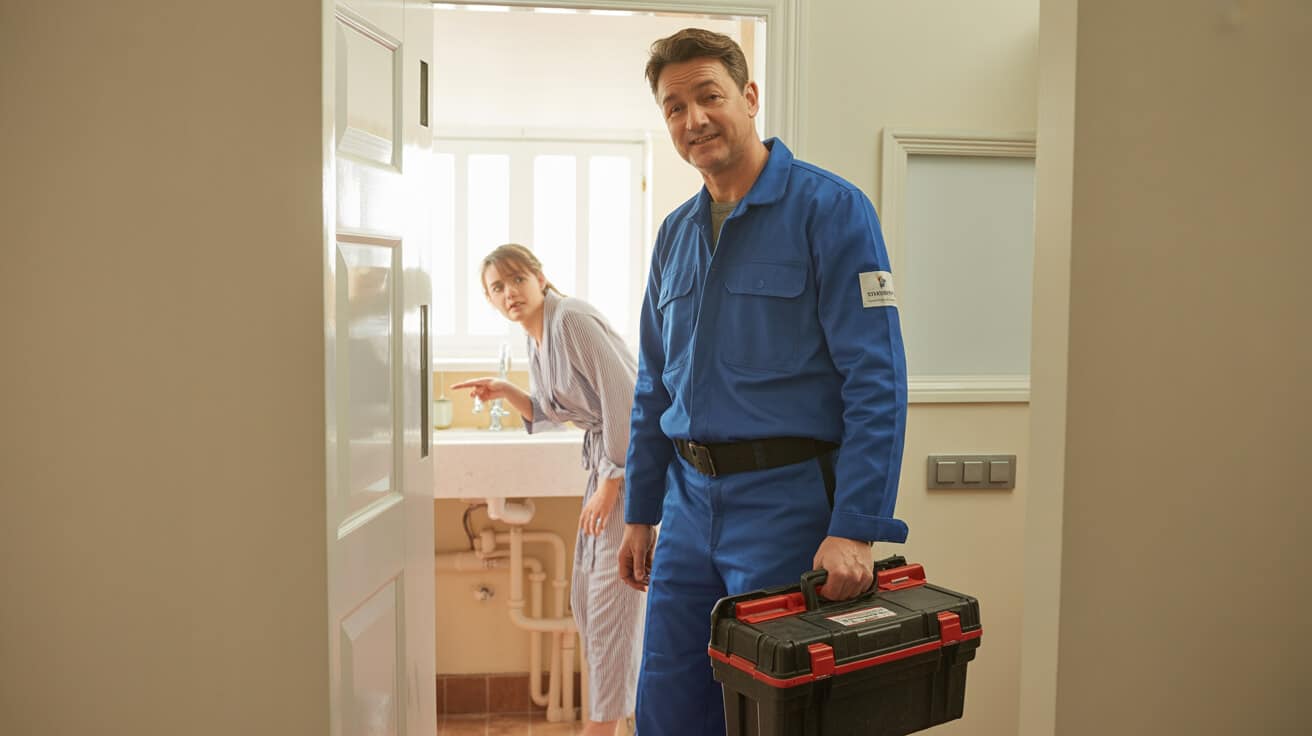
Even with a “perfect” system on paper, real-world usage breaks the rules. Building design, user patterns, and even little-used runs of pipe can sabotage even the most carefully specced setup.
When Design and Demand Clash: How Layout and Living Habits Create New Failures
- “Farthest tap phenomenon”: On long pipe runs, or in multi-storey homes, distant taps get the chill as pressure and residual heat bleed away.
- HMOs or split houses: New bathrooms added over years—without storage or pipework upgrades—undercut stability, causing unpredictable hot water during peaks.
- Dead legs and badly insulated lines: Unused tap runs, or those exposed in attics, lose temperature rapidly between uses—creating the illusion of wider system failure.
UK housing stock evolves over time, but the pipework usually doesn’t—systems outgrow their original specs, leaving owners with legacy headaches.
Smart system audits don’t just study blueprints—they measure how people use water all day, every day.
How Should Temperature Swings Be Investigated, Fixed, and Documented for Full Compliance (and Less Stress)?

Fixing temperature swings isn’t about guessing or swapping parts randomly. Responsible plumbing firms run smart, traceable diagnostics so nothing is left to luck—and all steps are documented for audit and handover.
Stepwise Diagnosis: Isolate, Test, Record—Not Trial and Error
The gold-standard approach for owners, landlords, and managers:
- Isolate feeds and individual branches: Confirm which taps go to which supply, and check if “cross-feeding” is the culprit.
- Run every tap in sequence, logging temp and flow: Chart data, not just “feel”, for every room.
- Disassemble key mixers/cartridges: Only after pressure/flow issues are ruled out—look for damage, debris, or part mismatches.
- Cylinder and heater inspection: Confirm immersions, thermostats, and safety values to standard; replace worn parts on evidence, not habit.
All work should be supported by:
- Photo-log of every intervention:
- Written job sheets (with WRAS/G3/CP12 tie-ins):
- Handover notes and demo for users or site managers:
A problem solved and documented is more than a fix—it’s evidence of diligence, compliance, and future-proof management.
What Are the Regulatory, Maintenance, and Communication Pitfalls That Owners, Agents, and Businesses Must Watch For?
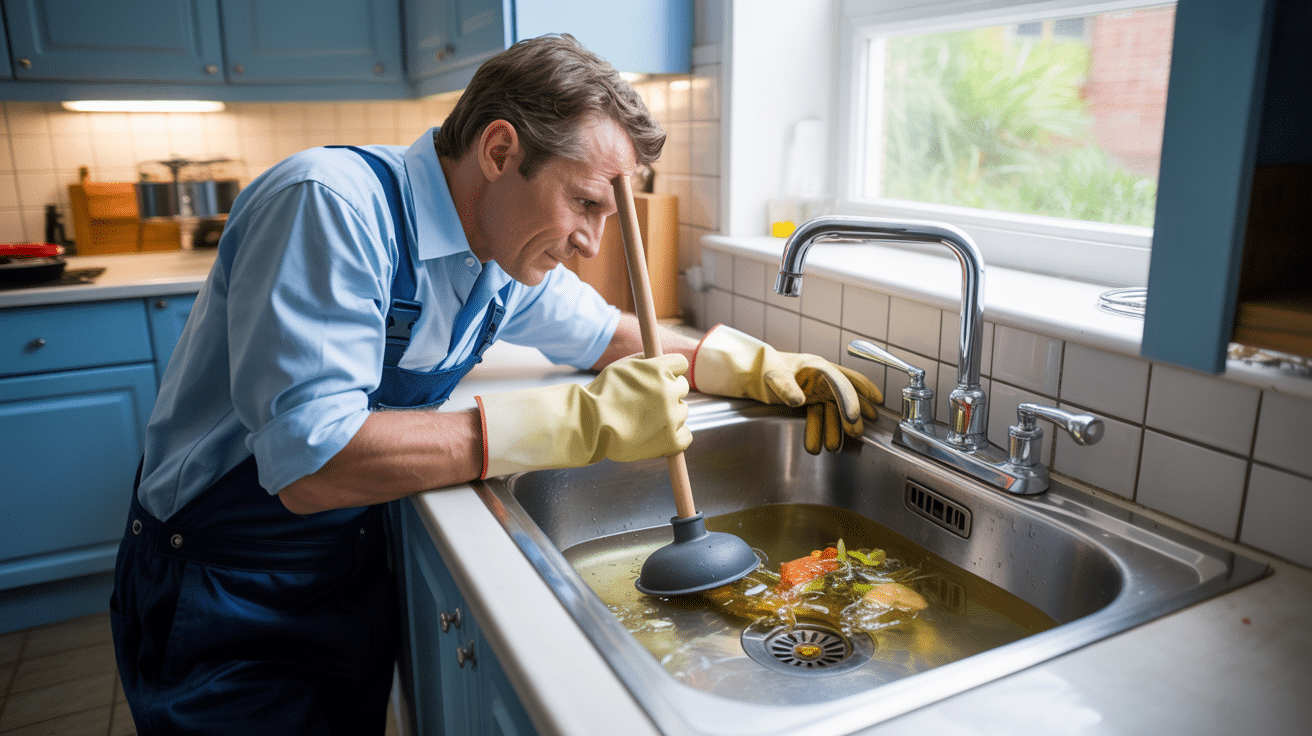
The stepwise, documented approach isn’t just best practice—it’s the single strongest protection against regulatory penalties, tenant complaints, and insurance refusals common in the UK market.
The UK Compliance Edge: Miss It at Your Peril
- Water Regs 1999: Only use compliant fittings, done by certified pros—paperwork in order saves arguments in audits *(WRAS, 2024)*.
- G3 and Unvented Hot Water: Only certified engineers can touch, service, or reset cylinders—DIY or handyman jobs void warranties, risk insurance, and break lease law.
- Letting/Agent obligations: All annual gas and water-safety certificates must be kept up, filed, and ready to show if there’s ever a tenant dispute or council spot-check.
- Energy efficiency/EPC: Old heaters, uninsulated pipe runs, or “patched” cylinders drag down scores—costing property value and limiting new lettings in stricter localities.
The “Hope-for-the-best” Trap
- DIY or handyman swaps on mixers/cartridges—nearly always miss WRAS or G3 compliance
- Ignoring routine paperwork and logs—leads to insurance claims being rejected or more expensive renewal rates
- Letting unclear, verbal quotes or “quick wins” go unrecorded—opens exposure and makes asset management a guessing game
Documentation is not a pain—it’s the owner and agent’s strongest tool for protecting every property and reputation at scale.
How Does Plumbers 4U Protect Your Reliable Hot Water—and Your Regulatory Reputation?
Plumbers 4U isn’t just about “fixing water.” With every job, we audit, document, and certify—giving every owner, landlord, or manager the assurance that hot water is reliable, compliant, and one less thing to worry about. Security isn’t a promise. It’s stepwise, document-first, and always regulation-anchored.
Our Guarantee for Owners, Landlords, Agents and Business Facilities
- True system audit every call-out: Each pressure point, flow check, valve, mixer, and cylinder is isolated, tested, and photo-logged—so you can trust every fix.
- Compliance comes standard: We use only WRAS and G3-compliant parts—no patchwork, no “that’ll do” shortcuts, and no paperwork headaches.
- Documentation included as default: All job sheets, before/after photos, and compliance certificates passed to you—no “ask and chase” loops.
- Tidy, user-ready handovers: We explain every change, demonstrate new controls, and walk you (or your tenant/site user) through best practice for reliable operation.
“A compliant, documented fix isn’t extra—it’s the new minimum for everyone managing property in 2024 and beyond.”
Digital Support and Ongoing Protection
- Secure, cloud-based compliance logs: Easy proof for landlords and large portfolios; no risk of missing certificates.
- Service reminders: Never miss a renewal or drop out of compliance.
- Emergency response prioritising vulnerable or business-critical sites: We triage call-outs by risk and downtime impact, not just first-in-line.
Working with Plumbers 4U means never having to worry if your paperwork matches your physical system: both are kept future-ready, transparent, and always audit-safe.
Don’t Accept Fluctuating Water—Book Certified, Documented Support With Plumbers 4U
Nobody managing property in the UK should accept “water that’s sometimes hot, sometimes not” as a fact of life. With Plumbers 4U, you gain more than working taps—you secure yourself from compliance penalties, reputation risk, and costly call-back cycles.
- Our engineers are G3, WRAS, WaterSafe, CSCS, and TrustMark certified
- We isolate, test, and explain—down to the valve, branch, or cartridge—so you don’t get more surprises
- Only compliant, regulation-approved parts, and no exceptions for the quick fix
- Job-closure with logging, digital/physical documentation, and handover for user confidence and audit readiness
- Emergency callouts are triaged to protect your business’s continuity and your tenant’s safety
Trust isn’t built on the water’s fixed—it’s secured with a system that’s future-proofed, compliant, and documented at every step.
Book your Plumbers 4U assessment and move from firefighting to future-ready—get system security, trust-building documentation, and a true partner in every property, every call.
Frequently Asked Questions
Why does my tap water suddenly switch from hot to cold—and what does this really indicate about my plumbing system?
Fluctuations in tap water temperature, especially those rapid shifts between hot and cold, typically signal that your hot water delivery system isn’t maintaining stable performance—usually due to a mixture of mechanical fatigue, poor flow dynamics, or gradual scale buildup. This isn’t just a kitchen or bathroom annoyance; repeated swings are the plumbing’s way of flagging a hidden inefficiency or compliance gap that’s quietly raising repair risks and undermining system longevity. Most UK homes and buildings depend on either combi boilers, unvented cylinders, or legacy tanks—each with their quirks. For instance, a combi boiler can only heat so much water on demand: run multiple taps together and the boiler quickly hits its threshold, delivering uneven results. If you’re in a hard water area and haven’t descaled in the last two years, expect limescale to throttle pipes or immersion elements. Several users also notice problems appear after renovations—a tell-tale sign that a dead leg (capped pipe remnant), reversed mixer, or pressure imbalance is at play. Left unchecked, even minor swings can lead to larger issues, from non-compliance with HSE minimum hot water guidelines to insurance disputes after long-term undiagnosed leaks.
“When water can’t make up its mind, your system’s quietly telling you it’s due for respect, not guesswork.”
How can you pinpoint whether it’s an isolated tap or a wider network fault?
- Run each hot tap alone while the rest of the system is idle.
- If only one tap misbehaves, suspect its mixer or cartridge.
- If all taps display the problem, especially at peak times, your source appliance (combi, cylinder, or flow/pressure regulator) may be underperforming.
- Document whether issues started after system works or new fixtures.
Does ignoring temp swings have legal or operational consequences?
Absolutely—WRAS and UK Building Regulations require every home and business to supply water at safe, steady temperatures. Inconsistent delivery isn’t just frustrating; it can mask underlying faults, hike up energy use, and leave you exposed to compliance breaches or HSE scrutiny.
What are the underlying faults that typically trigger tap water temperature swings in UK homes and businesses?
The most frequent culprits fall into three main groups—mechanical, hydraulic, and legacy pipework interactions. Mechanical failures like diverter valve sticking (combi boilers) or thermostat fatigue (cylinders) disrupt hot water priority. Hydraulic challenges often stem from undersized boilers or unbalanced cylinder supply: running more than one outlet at once reveals underspec systems, or systems with neglected annual servicing. Scale, caused by hard water, insulates immersion elements and narrows pipe bores, reducing heat transfer and lengthening recovery times. Recently updated layouts can also leave “dead legs”—old pipes left capped but still connected—that allow cold crossflow or back-siphonage, causing unexplained chills or surges. Commercial and rental environments face an extra hazard: faulty non-return valves or subpar blending valves not only produce unpredictable temperatures but actively breach Part G and G3 regulations.
Are certain properties or systems more vulnerable?
- Large homes or multi-unit properties with long pipe runs or multiple bathrooms.
- Spaces with recent conversions, upgraded appliances, or add-on showers/baths not matched by an upsized heating source.
- Commercial facilities—schools, care homes, rented shops—where hygiene law makes steady hot water non-negotiable.
| Fault/Failure Type | Symptom Pattern | Home Diagnostic Action |
|---|---|---|
| Diverter valve failure | Fluctuates when using more than one outlet | Does boiler lag/fire irregularly? |
| Limescale on elements | Takes longer to reheat, cycles from hot to cold | Listen for “kettling” at tank/cylinder |
| Faulty mixer valve | Only one tap affected, others are stable | Control trial: swap mixer, compare |
| Dead leg/crossflow | Odd surges post-work, periodic cold only | Any capped pipes or old feeds visible? |
| Pressure dip/system size | Whole property affected, especially at busy times | Document pressure at furthest tap |
How can you resolve tap water temperature swings without disrupting daily life or risking non-compliance?
Restoring stable hot water calls for a logical, minimally invasive approach, moving from easy-to-fix components toward deeper systems diagnosis only if needed. Begin by confirming if the temp instability is limited to one outlet—if so, swapping out a mixer cartridge or checking for visible limescale is often all that’s needed. If your entire property’s losing consistency, crosscheck system pressure and verify your combi/cylinder is set and sized for true demand. Annual descaling of immersion elements, mixer cartridges, and any system philtres not only resolves most hard water side-effects but is now a basic requirement in many UK hard water postcodes. Airlocks, especially after redevelopment or water main shut-off, often conceal themselves as annoying, recurring fluctuations; a full system bleed will reveal if it’s a flash-in-the-pan or something structural. If troubleshooting doesn’t restore steady delivery—or if you spot corrosion, visible scale, or drips from safety valves—pause and book a WRAS, WaterSafe, or G3-certified engineer. Professionals now employ digital endoscopes, pressure loggers, and schematic reviews to diagnose issues without invasive procedures, aligning your fix to UK water hygiene standards and insurer demands.
“Method beats mayhem—systematic checks fix the fault where it lives and keep every fix traceable for future value.”
Red flags signalling it’s time to escalate:
- Multi-outlet fluctuations with or without visible leaks.
- Persistent cold spells following recent renovations or water shut-off.
- Undocumented or dubious system modifications.
When are temperature swings actually an urgent technical problem—and not just a by-product of heavy use?
Most properties experience short-lived dips if multiple outlets run at once—especially on combi boiler systems. But when temperature inconsistencies crop up at quiet hours, migrate from tap to tap randomly, or begin straight after property works, you’re facing more than just high demand. Indicators of genuine fault include water that never reaches its set temperature, audible “kettling” or whistling at the appliance, or cold surges that persist after usage drops. Hospitals, care homes, and managed properties must treat any hot water drop—especially under the 50°C recommended minimum—as a safety incident, not a “feature.” Cross-connections, worn valves, and pressure or flow imbalances can all push HSE and WRAS regulations to the brink. Don’t let busy schedules normalise these swings: silent failures are the root cause of long-term property value erosion and legal risk.
Questions to clarify fault source vs. operational capacity:
- Do temperatures surge unpredictably with *no other outlets in use*?
- Did the swings begin after system work, appliance swap, or DIY plumbing?
- Is there unexplained noise, dripping, or tank overflow?
- Does the issue worsen at the same outlet or time of day?
“Every system has its limit, but a hot tap that won’t stay hot on its own schedule shouldn’t be willing to negotiate.”
How does routine maintenance and documentation shield you from recurring hot-cold swings and compliance pitfalls?
Scheduled preventive maintenance does more than extend system life—it actively prevents recurrence of tap temperature swings, streamlines compliance for insurance or letting, and protects your property’s audit trail. WRAS, WaterSafe, and G3-trained engineers are required by landlords and recommended for all upgrades or major repairs, as they document every fix, valve swap, or mixer update into your ownership record. Annual system services—now digitally logged on most modern boilers—catch diverter, thermostatic and scaling threats before symptoms emerge. Digital logbooks, part codes, and pictorial evidence make the difference during insurance claims or property sales, providing a hard copy trail you can hand to any insurer, buyer, or letting agent.
- Schedule annual checks on all system valves, mixers, and thermostatic components.
- Keep every repair and swap on file—with model, batch, and installation date.
- Book only certified engineers for G3, unvented cylinder, or complex systems works.
- Upgrade documentation: EPC and energy performance audits now require a visible compliance history for maximum property value.
“A logbook filled by a good engineer won’t just keep you safe in a crisis—it adds resale value and credibility every time you need to prove your standards.”
When should you call in a certified plumber for erratic tap temperature—and how do expert visits deliver lasting solutions?
Book a professional as soon as temperature swings start affecting multiple outlets, create safety concerns, or reappear after recent property changes or attempted repairs. Legal mandates kick in for work on G3 unvented cylinders, building control notifications, Zone or blending valve repairs, and anything affecting hot water supply in business, rental, or public sites. A top-tier engineer will:
- Conduct pressure and temperature mapping at every tap and main system point.
- Use both physical and digital tools (from endoscopic pipe inspection to digital logging of appliance cycles).
- Log and photograph every component swapped, including manufacturer codes.
- Issue written compliance and handover documents, ensuring warranties and insurance eligibility.
- Demonstrate live, stable operation for every hot water route before leaving—your sign-off, your assurance.
Steps for a professional fix that lasts:
- Write down every symptom and attempted fix before the visit.
- Request up-front written scope, certification numbers, and a clear action summary.
- Attach documentation, photos, and reports to your home or asset file.
- Verify stable delivery with the engineer—use and test each outlet personally before handover.
“Having a certified expert doesn’t just patch up the present—it bulletproofs tomorrow’s comfort and compliance for everyone under your roof.”
How do Plumbers 4U deliver compliance, reliability, and value with every hot-cold issue resolved?
With Plumbers 4U, you’re not just hiring a tradesperson—you’re securing access to a WRAS, WaterSafe, and G3-certified team skilled in diagnostics, regulatory upgrades, and documentation that secures your comfort and legal peace of mind. Engineers work stepwise and with total transparency, from rapid fault isolation through to compliance sign-off, recorded in both physical and digital handover. Scheduled maintenance and well-documented upgrades protect you from future disputes, insurance hurdles, and accidental value loss when you decide to sell, let, or expand your property. Stop rolling the dice on stable hot water—let proven engineers act before minor swings become major ruptures.
Ready for trouble-free, certified hot water—now and long-term? Schedule your audit and solution visit with Plumbers 4U today, and keep everyone in your property safe, comfortable, and fully protected.
